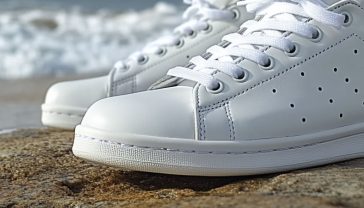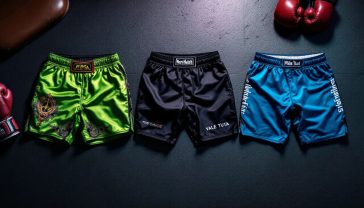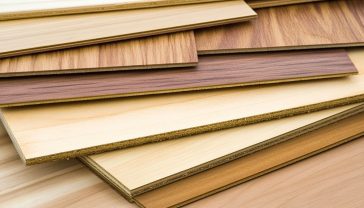Fabric Shavers: Your Ultimate Guide to Renewing Fabrics
Discover how a simple fabric shaver can revive your entire wardrobe. Our definitive guide covers everything from how they work to pro tips for any fabric.

This post may contain affiliate links. If you make a purchase through these links, we may earn a commission at no additional cost to you.
We’ve all been there. You reach for that cosy jumper, the one that’s seen you through chilly autumn walks and countless evenings on the sofa. But as you pull it on, you notice it’s happened. The dreaded bobbles. All over the sleeves, down the sides where your bag rubs – a sad, fuzzy rash of pills that makes your beloved knitwear look old and tired.
It’s a heart-sinking moment. You start to wonder if its best days are over, if it’s destined for the charity bag. But what if there was a simple, almost magical way to turn back the clock?
Well, there is. Meet the fabric shaver, also known fondly across the UK as a debobbler or lint remover. This unassuming little gadget is the unsung hero of wardrobe maintenance. It’s a simple, effective tool that can breathe new life into your clothes, sofas, and cushions, making them look crisp and new again. In a world of fast fashion, the humble fabric shaver is a powerful ally, championing the wonderfully British “make do and mend” spirit. It’s about saving your favourites, saving money, and reducing waste. So, let’s dive in and discover everything you need to know about winning the war on bobbles.
Part 1: What on Earth is a Fabric Shaver (and Why Do I Need One)?
Before we get into the nuts and bolts, let’s clear up the basics. What exactly is this little device, and why is it a must-have in any household?
What’s a Debobbler, Anyway?
At its heart, a fabric shaver is a handheld tool designed to safely trim off the fuzzy balls, or ‘pills’, that form on fabrics. Think of it as a lawnmower for your clothes. It glides over the surface, neatly shearing away the unwanted fluff without damaging the fabric underneath.
Whether it’s an electric model that whirs into action or a simple manual comb, the goal is the same: to restore a smooth, clean finish to your textiles, making them look as if they’ve just come from the shop.
The Mystery of Pilling: Why Clothes Go ‘Bobbly’
So, where do these annoying bobbles come from? It’s not a sign that your clothes are poor quality (though some fabrics are more prone to it than others). Pilling is a natural process that happens when fibres in the fabric become loose and get tangled together.
Imagine the fibres in your jumper are like strands of hair. Through everyday wear – rubbing against a coat, a seatbelt, or even just your own arms – some of these fibres break or loosen. Friction rolls these loose fibres up into tiny knots, creating the bobbles you see. It’s a bit like getting split ends, but for your clothes.
Fabrics that are most likely to pill include:
- Wool and Cashmere: Especially when new, these natural fibres have shorter strands that can easily surface and tangle.
- Acrylic and Polyester Blends: Man-made fibres are very strong, so instead of breaking off, the pills they form are anchored firmly to the fabric.
- Fleece and Cotton Knits: Think sweatshirts and joggers – the soft, comfy materials are prime candidates for pilling, especially in high-friction areas like under the arms and between the thighs.
A fabric shaver doesn’t just make your clothes look better; it helps you get more life out of them. For the price of a couple of fancy coffees, you can rescue an entire wardrobe’s worth of knitwear.
Part 2: A Brief History of the Bobble Buster
The desire to keep our clothes looking sharp is nothing new. Long before the first electric debobbler was plugged in, people were finding clever ways to de-fuzz their fabrics.
From Pumice Stones to Power Tools
In the past, people used simple tools like fine-toothed combs or even rough stones, like pumice, to gently scrape away pills from their woollen garments. These early methods required a careful hand but were surprisingly effective. You can still buy specialised ‘sweater stones’ today, which work on the same ancient principle.
The real revolution, however, came with two major developments in the 20th century. First was the post-war “make do and mend” culture in Britain. With resources scarce, families became experts at extending the life of every item they owned, and that included keeping clothing in good nick for as long as possible.
Second was the boom in synthetic fabrics like nylon and acrylic. These new materials were cheap and versatile, but they pilled like nobody’s business. This created a widespread problem that needed a modern solution. And so, the electric fabric shaver was born – a small, motorised gadget that promised to quickly and safely remove bobbles, fitting perfectly into the new age of household convenience.
Part 3: How They Work: A Peek Under the Bonnet
Fabric shavers might seem like magic, but their mechanics are brilliantly simple. Understanding how they work will help you choose the right one and use it effectively.
The Electric Shaver: A Close Shave for Your Clothes
The most common type of fabric shaver is the electric kind. It works a lot like an electric razor you’d use on your face, but with a crucial safety feature.
- The Mesh Guard: The head of the shaver is a metal foil or mesh with lots of small holes. This guard is the key to the whole operation. It presses down on the fabric, allowing the bobbles to poke through the holes while keeping the flat, undamaged fabric safely underneath.
- The Rotating Blades: Behind the guard, a set of sharp blades spins at high speed. As the bobbles poke through the mesh, the blades slice them off cleanly and instantly.
- The Lint Collector: The shaved-off fuzz is then sucked into a small, detachable compartment, usually in the handle. You simply unclip it and empty it into the bin when it’s full.
The beauty of this design is that the blades never actually touch the main body of your garment. They only cut what’s sticking out, making it a very safe and efficient way to de-pill.
The Manual Approach: Combs and Stones
Manual de-pillers work in a slightly different way. They don’t shear the bobbles; they gently pull or scrape them away.
- Fabric Combs: Often called cashmere combs, these tools have very fine, firm teeth. You simply glide the comb across the fabric surface with gentle pressure. The teeth catch the base of the pills and pull them away from the fabric. It’s a very delicate process, perfect for expensive and fine-knit jumpers.
- Sweater Stones: These look like a block of pumice stone. Their rough, porous surface is used to “scrub” the fabric in one direction. The abrasive texture catches the bobbles and rips them from the surface. This method is a bit more aggressive and is best suited for heavy-duty, robust fabrics like thick wool coats or old sofas.
The key difference is in the action: electric models cut the bobbles, while manual tools pull or scrape them.
Part 4: The Great Debobbler Showdown: Choosing the Right Tool for the Job
Walking into a shop or browsing online, you’ll find a surprising variety of fabric shavers. They aren’t all created equal, and the best one for you depends on what you’ll be using it for.
Electric Fabric Shavers: Power and Precision
These are the most popular choice for their speed and efficiency. If you have a lot of items to de-bobble, an electric model is your best friend.
Battery-Operated: The Portable Pal
These are typically the cheapest and most common type. They run on standard AA batteries, making them great for travel or quick touch-ups.
- Pros: Highly portable, inexpensive, widely available.
- Cons: Power can fade as the batteries run down, leading to less effective shaving. The ongoing cost of batteries can add up.
Rechargeable (USB): The Eco-Conscious Choice
A modern and very popular option. These shavers have a built-in battery that you charge via a USB cable, just like your phone.
- Pros: More environmentally friendly, provides strong, consistent power until the charge runs out, cheaper to run in the long term.
- Cons: You need to remember to charge it. Once the battery dies, you have to wait for it to recharge before you can use it again.
Mains-Powered: The Heavy-Duty Hero
For serious de-bobbling tasks, a mains-powered shaver is the ultimate weapon. You plug it directly into the wall for maximum, uninterrupted power.
- Pros: The most powerful option, never runs out of power, ideal for large items like sofas, curtains, or de-pilling an entire winter wardrobe in one go.
- Cons: Less portable due to the cord, which can sometimes get in the way.
Manual Fabric Shavers: The Gentle Touch
These tools are perfect for people who own delicate, expensive knitwear or who only need to tackle a small amount of pilling.
Fabric & Cashmere Combs: For Your Posh Knits
This is the tool of choice for luxury materials. Its gentle action protects delicate fibres from being pulled or snagged.
- Best for: Cashmere, merino wool, lambswool, and other fine knits.
Sweater Stones: Tough Love for Tough Bobbles
When you have serious, stubborn pilling on a sturdy fabric, a sweater stone can work wonders.
- Best for: Heavy wool coats, chunky acrylic jumpers, and tough upholstery. Be warned, it can leave a little dusty residue, which brushes off easily.
Multi-Tools (like Gleener): The All-in-One
Some brands offer clever all-in-one tools. The Gleener, for example, has three interchangeable de-pilling heads for different fabric types, plus a lint brush on the other end. It’s a great manual option that covers all bases.
At a Glance: Which Shaver Should You Buy?
| Shaver Type | Best For | Good For | Avoid On |
|---|---|---|---|
| Rechargeable Electric | Everyday use, most fabrics, eco-conscious users | Large items like sofas | Very delicate, open-weave knits |
| Battery Electric | Occasional use, travel, budget-conscious buyers | Quick touch-ups | Very delicate, open-weave knits |
| Mains Electric | Heavy-duty de-pilling, upholstery, professionals | Whole wardrobe sessions | Very delicate, open-weave knits |
| Cashmere Comb | Delicate knits (cashmere, merino) | Fine wools | Heavy-duty, tough pills |
| Sweater Stone | Heavy wool, sturdy upholstery, tough synthetics | Chunky cardigans | Delicate fabrics like cashmere or silk |
Part 5: How to De-Pill Like a Pro: A Foolproof Guide
Using a fabric shaver is incredibly satisfying, but there’s a right way to do it to get perfect results and keep your clothes safe.
Step 1: Get Your Garment Ready
First things first, lay your garment on a flat, firm surface. An ironing board is perfect, but a clean floor or table will do just fine. Don’t try to de-bobble clothes while you’re wearing them! Smooth out any wrinkles.
Step 2: The Gentle Touch Test
If it’s your first time using the shaver on a particular item, start on a small, hidden area, like an inside seam or the hem. This lets you see how the fabric reacts before you tackle the whole thing. Always start with very light pressure. You don’t need to press down hard; let the tool do the work.
Step 3: The Motion
For an electric shaver, use small, gentle, circular motions across the fabric. For a manual comb or stone, use short, firm strokes, always going in one direction (usually downwards).
Step 4: Handle Tricky Bits with Care
When you get to areas like seams, collars, cuffs, and hemlines, pull the fabric taut with your free hand. This creates a flat surface and prevents the shaver from catching on any stitches or edges, which could cause a snag. Be extra careful around buttons, zips, and any embellishments.
Step 5: Keep it Clean
If you’re using an electric model, the lint collector will fill up surprisingly fast. Empty it frequently, as a full collector can reduce the shaver’s suction and performance.
Common Blunders (and How to Avoid Them)
- Pressing Too Hard: This is the biggest mistake. It won’t remove bobbles any faster, but it will increase the risk of snagging the fabric and creating a hole. Be gentle!
- Using on Unsuitable Fabrics: Don’t be tempted to try it on that lacy top or silk shirt. Stick to the fabrics it’s designed for.
- Forgetting to Clean the Tool: A clogged shaver won’t work properly. After each use, take a moment to empty the lint and use a small brush (they often come with one) to clean any fluff from around the blades.
Part 6: The Fabric Files: What to Shave and What to Save
Knowing which fabrics are safe for shaving is crucial. Here’s a simple guide.
Green Light: Go for It!
These fabrics are generally very safe to de-pill with any standard electric shaver.
- Wool: Most wool jumpers, coats, and trousers.
- Cotton: Sweatshirts, hoodies, joggers, and T-shirts.
- Synthetics: Polyester, acrylic, and fleece garments are perfect candidates.
- Upholstery: Most fabric sofas, armchairs, and cushions can be revived beautifully.
Amber Light: Proceed with Caution
These fabrics are delicate and require a gentler approach.
- Cashmere & Merino Wool: These fine knits can be damaged by aggressive shaving. It’s highly recommended to use a manual cashmere comb for these. If you must use an electric shaver, make sure it has a height-adjustable guard or use absolutely no pressure.
- Angora: Like cashmere, this fluffy fabric needs a very delicate touch. A comb is best.
Red Light: Stop! Don’t Even Think About It
Trying to shave these fabrics is asking for trouble. You are very likely to cause snags, pulls, or holes.
- Lace and Silk: These materials are far too delicate.
- Open-Weave or Loose Knits: If you can easily see through the knit, a shaver will likely catch and pull the threads.
- Embroidered or Beaded Items: You risk damaging the decorative details.
- Anything with Existing Damage: Shaving over a small snag or hole will only make it worse.
Part 7: More Than Just Jumpers: Surprising Uses for Your Shaver
Your fabric shaver is more versatile than you think. Once you’ve revived your wardrobe, you can turn its magic on all sorts of other household items.
- Transforming Your Sofa: Is the seat of your favourite armchair looking a bit fuzzy? A powerful mains-powered or rechargeable shaver can make it look years younger in minutes.
- Refreshing Cushions and Curtains: Decorative cushions and even heavy curtains can suffer from pilling over time. A quick once-over will have them looking sharp again.
- Sprucing Up Car Seats: The fabric seats in your car endure a lot of friction. A portable, battery-operated shaver is perfect for tidying them up.
- Saving the Teddies: A much-loved teddy bear or stuffed animal can get very bobbly. A gentle de-pill can restore its soft coat.
- Other Ideas: Think blankets, scarves, fabric-covered office chairs, and even the cat’s favourite sleeping spot!
Part 8: Looking After Your Little Lifesaver
To keep your fabric shaver working perfectly for years, a little bit of maintenance goes a long way.
Cleaning and Care
As mentioned, always empty the lint trap after each big job. Use the little brush that often comes with electric models to gently whisk away any fluff that’s collected around the blades and under the mesh guard. This ensures the blades can spin freely and cut efficiently.
Storing and Blade Replacement
Store your shaver in a dry place. Some models come with a protective cap for the head – use it to prevent the delicate mesh guard from getting dented or damaged.
Over time, the blades in an electric shaver will become dull. Some higher-end models come with replacement blades, which are easy to swap out. If your shaver stops cutting as well as it used to, check if you can buy new blades for it before buying a whole new device.
Part 9: The Future is Fluff-Free
In an age where we’re all trying to be more mindful about our consumption, the fabric shaver is more relevant than ever. It’s a small tool that represents a big idea: repair, don’t replace.
By taking ten minutes to de-pill a jumper, you’re not just making it look good. You’re extending its life, keeping it out of landfill, and saving the money and resources it would take to buy a new one. This simple act of care is a quiet rebellion against the throwaway culture of fast fashion.
Looking ahead, we may see innovations in textiles, with new, more sustainable fabrics being engineered to resist pilling from the start. But for the clothes we already own and love, the humble debobbler will remain an essential tool for any savvy, style-conscious, and sustainable household.
Conclusion: Long Live Your Wardrobe!
The fabric shaver is one of those simple, affordable gadgets that genuinely changes the game. It’s the secret to keeping your favourite clothes and soft furnishings looking pristine, year after year.
It empowers you to rescue that bobbly cardigan from the back of the wardrobe, to give your sofa a weekend facelift, and to take pride in making your belongings last. So go on, dig out that tired old jumper. With a trusty fabric shaver in hand, you’re not just removing pills – you’re restoring memories and reviving favourites, ready for their next chapter with you.
Further Reading
For those interested in clothing care and sustainable fashion, these resources are highly respected:
- The Waste and Resources Action Programme (WRAP): A leading UK charity working on sustainable resource use. Their work on textiles is particularly insightful. https://wrap.org.uk/
- Fashion Revolution: A global movement campaigning for a more sustainable and ethical fashion industry. https://www.fashionrevolution.org/
- The Good On You Directory: A trusted source for sustainability ratings for fashion brands. https://goodonyou.eco/






